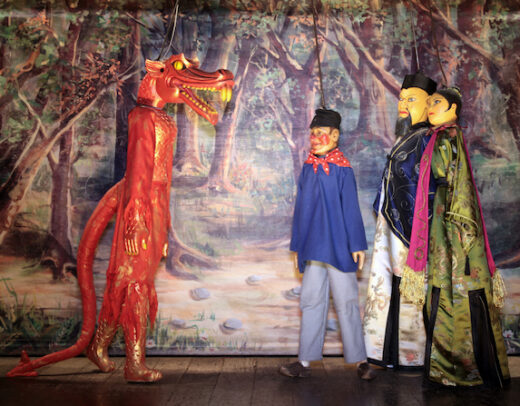
Typed or electronic text with handwritten annotations
15 pages
Tchantchès et Mandarin
In Tchantchès et Mandarin, Joseph Ficarrotta brings together a legendary Chinese motif and characters from Carolingian epics – the traditional heroes of puppet theatre from Liège (Belgium). Although he does not appear on stage, Emperor Charlemagne is mentioned by the other characters.
A fearsome monster is defeated by a brave hero
The Mandarin is sad. A new year has begun, and he must negotiate again with Homme-dragon (the Man-dragon), a monster that terrorizes his kingdom. The messenger Djin-Ti offers to speak with the monster for him, even though he is even more afraid of it than the Mandarin. But negotiation is impossible: Homme-dragon asks for princess Yin, the Mandarin’s daughter, or he will eat every child in China. The Mandarin asks Roland and another knight for help, but the monster defeats them effortlessly.
The Mandarin, his daughter and Djin-Ti go to Charlemagne for help. Near Liège, Djin-Ti suggests that his master and the princess rest while he speaks with the emperor. But how can he approach Charlemagne? P’tit Colas, a child from Liège, advises Djin-Ti to speak with his friend Tchantchès instead.
Tchantchès devises a plan to beat the monster. He suggests that he and the Mandarin set a trap for Homme-dragon. The princess will write a letter to lure him to Liège. The plan is successful: Homme-dragon arrives in Tchantchès’ home and is defeated by him. The Mandarin does not know how to thank his saviour, but Tchantchès needs no thank-you. He invites him to “celebrate this victory and the friendship between China and good old Liège” by drinking peket – the local Jenever alcohol.
First performance
Puppet theatre of the Musée de la vie wallonne (Liège, Belgium)